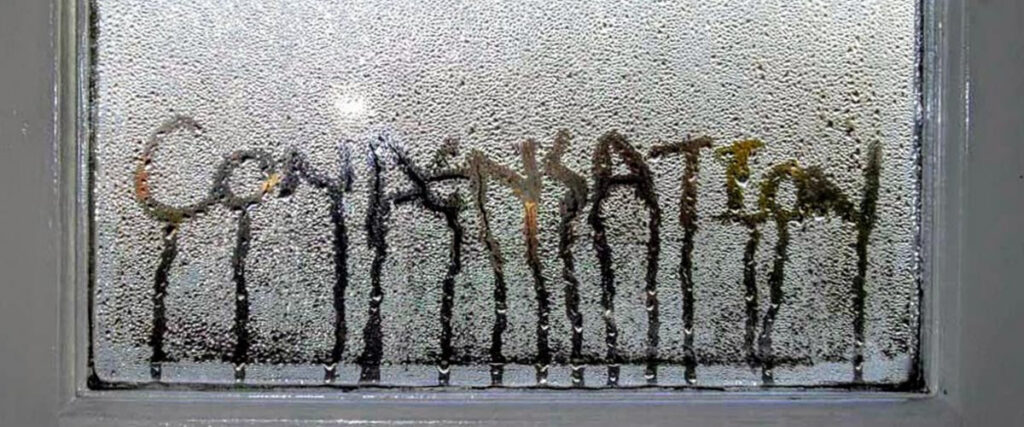
From potential mold or mildew growth to bubbling paint, water damage from condensation on your windows isn’t good. When outdoor temps drop, condensation on windows is often on the rise. So what should you do about it?
What causes window condensation?
Simply put, as it gets colder outside, so do your windows. Water vapor in the air (humidity), hits the cold windowpane and forms condensation just like your favorite beverage sweating during a summer BBQ (sounds nice right about now, huh?).
The higher the humidity in your home and/or the colder it is outside, the more condensation there will be on your windows. With that in mind, there are 3 ways to reduce condensation.
How can I eliminate window condensation?
1) Get better windows and/or better insulation around the casing – spray foam works great for this!
2) Lower the humidity in the home
3) Move somewhere warm! (Chicago is one of the best cities in the world, but come on, you’ve thought about it!)
New windows don’t install themselves over dinner and they aren’t cheap, so lowering the humidity on the few extreme cold days each year is definitely low-hanging fruit to stop condensation. The question is how low do you go?
Finding the optimal humidity in this weather can be challenging…and uncomfortable!
Suggested Winter Humidity Levels
The simple answer is you want the humidity to be as high as possible without causing condensation. Unfortunately, that ideal humidity level literally fluctuates with the weather. And here in Chicago, the weather can change 3 times a day!
The colder outside, the lower humidity your home can sustain before the windows condensate. Also, every house is different and the type of windows and quality of their installation play a critical role. You have two options – get a smart thermostat to constantly optimize your humidity or continuously adjust your home’s humidity level.
Here are some recommended levels that are based on generic homes and windows. Your house may be different!
| Outdoor Temperature | Indoor Humidity |
| Higher than 50F | Max. 50% |
| 25F to 50F | Max. 40% |
| 0F to 25F | 30% – 40% |
| -20F to 0F | 20% – 35% |
| Below -20F | 15% – 25% |
What are the benefits of humidity?
Having sufficient humidity in your home not only protects wood flooring, furniture, trim, artwork and more from cracking, it also protects your health and your wallet. Proper humidity levels actually reduces dust levels and can inhibit the growth of many bacteria and viruses (yes Coronaviruses survive better in drier air than properly humidified air).
Humidity also makes the air feel warmer. We say “it’s not the heat, it’s the humidity” when describing how high humidity makes summer weather feel oppressive. In the winter humidity can keep us warmer while dry air feels cooler. Dry air actually sucks moisture out of your skin which has a cooling effect. Having enough humidity will save you money by making you comfortable at lower temps (i.e. 71 at proper humidity will feel like 73 without humidity). You can therefore set your thermostat lower and save money while also reducing wear and tear on your furnace.
Automatic Window Protection…Tell me more!
Many smart thermostats and humidistats that either has an outdoor temperature sensor or get temperature data through a WiFi connection actually have the ability to automatically adjust and optimize your home humidity setting.
The humidity is lowered on cold days to prevent window condensation and increased on milder days to increase comfort, health, and make it easier on your furnace.
More humidity or humidifier questions? Click here!
Need service or maintenance? Click Here!
Want an entertaining video completely unrelated to HVAC? Click Here!


